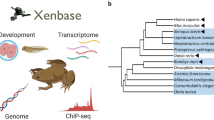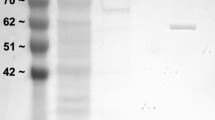Abstract
The effects of whole body dehydration (up to 40% of total body water lost) or anoxia exposure (up to 2 days under N2 gas) at 5 °C on tissue levels of adenosine 3′–5′ cyclic monophosphate (cAMP) and the percentage of cAMP-dependent protein kinase present as the free catalytic subunit (PKAc), as well as the levels of the protein kinase C (PKC) second messenger, inositol 1,4,5-trisphosphate (IP3), were assessed in two anurans, the freeze-tolerant wood frog, Rana sylvatica, and the freeze-intolerant leopard frog, Rana pipiens. Dehydration of wood frogs resulted in a rapid elevation of liver cAMP and PKAc; cAMP was 3.4-fold greater than control values in animals that had lost 5% of total body water, whereas PKAc was elevated threefold in 20% dehydrated frogs. These results indicate protein kinase A mediation of the liver glycogenolysis and hyperglycemia that is induced by dehydration in this species. Skeletal muscle PKAc content also rose with dehydration but neither cAMP nor PKAc was affected by dehydration in leopard frog tissues. Anoxia exposure had different effects on signal transduction systems. PKAc was elevated after 1 h anoxia in R. sylvatica brain and was sustained over time but the enzyme was unaffected in other organs; by contrast, R. pipiens showed variable responses by PKAc to anoxia in three organs. Both species showed rapid (within 30 min) and large (3 to 7.8-fold) increases in IP3 in liver of anoxic frogs that decreased slowly with continued anoxia. IP3 also increased quickly in heart of anoxia-exposed wood frogs. This suggests that PKC may mediate various metabolic adjustments that promote hypoxia/anoxia resistance such as coordinating metabolic rate depression. A progressive rise in liver IP3 during dehydration in wood frogs (reaching fourfold higher than controls in 40% dehydrated animals) may also mediate similar hypoxia resistance adaptations under this stress since anurans experience progressive hypoxia due to increased blood viscosity when water loss reaches high values. The patterns of second messenger and PKAc changes in wood frog liver during dehydration closely parallel the changes seen in these same parameters during natural freezing suggesting that the freeze tolerance of selected terrestrially hibernating anurans may have evolved out of various anuran mechanisms of dehydration resistance.
Similar content being viewed by others
Author information
Authors and Affiliations
Additional information
Accepted: 2 January 1997
Rights and permissions
About this article
Cite this article
Holden, C., Storey, K. Second messenger and cAMP-dependent protein kinase responses to dehydration and anoxia stresses in frogs. J Comp Physiol B 167, 305–312 (1997). https://doi.org/10.1007/s003600050078
Issue Date:
DOI: https://doi.org/10.1007/s003600050078




